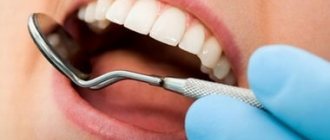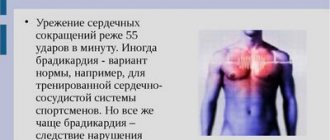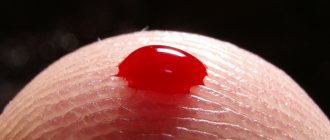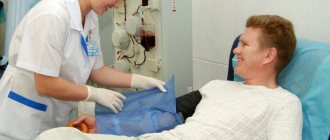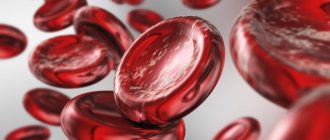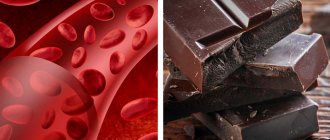The two main tasks of hemostasis are to maintain blood in a fluid state and to prevent its loss in the event of injury. The operation of the system looks like a chain of complex biochemical reactions in which blood cells, plasma and vessel walls participate.
Bleeding disorders can be inherited. In some cases, they are acquired through medications, malfunctions of the immune system, malignant processes and liver diseases, in which the production and exchange of coagulation factors occurs.
Classification of disorders
There are three “branches” in the hemostasis system: coagulation - responsible for the formation of blood clots, anticoagulation - maintains the rheological properties of blood normal, and fibrinolytic - ensuring the dissolution of blood clots.
Disorders of the blood coagulation system occur in one of two directions:
- In the direction of hypocoagulation - decreased coagulation properties (thrombocytopenia, von Willebrand and Wergolf diseases, hemophilia).
- Or its increase - hypercoagulation (thrombophilia, DIC and APS syndrome).
According to the mechanism of development, disorders of the vascular-platelet unit and failures in coagulation hemostasis are distinguished.
Hemophilia
In newborns, signs of hemophilia can include prolonged bleeding from the umbilical cord stump, subcutaneous hematomas, and cephalohematomas. Bleeding in children of the first year of life can be associated with teething, surgical interventions (incision of the frenulum of the tongue, circumcision). The sharp edges of baby teeth can cause biting of the tongue, lips, cheeks and bleeding from the mucous membranes of the oral cavity. However, hemophilia rarely debuts in infancy due to the fact that breast milk contains a sufficient amount of active thrombokinase.
The likelihood of post-traumatic bleeding increases significantly when a child with hemophilia begins to stand and walk. Children after one year are characterized by nosebleeds, subcutaneous and intermuscular hematomas, and hemorrhages in large joints. Exacerbations of hemorrhagic diathesis occur after infections (ARVI, chickenpox, rubella, measles, influenza, etc.) due to impaired vascular permeability. In this case, spontaneous diapedetic hemorrhages often occur. Due to constant and prolonged bleeding, children with hemophilia have anemia of varying severity.
According to the degree of decreasing frequency of hemorrhage in hemophilia, they are distributed as follows: hemarthrosis (70-80%), hematomas (10-20%), hematuria (14-20%), gastrointestinal bleeding (8%), hemorrhage in the central nervous system (5% ).
Hemarthrosis is the most common and specific manifestation of hemophilia. The first intra-articular hemorrhages in children with hemophilia occur at the age of 1-8 years after bruises, injuries or spontaneously. With hemarthrosis, pain is expressed, there is an increase in the volume of the joint, hyperemia and hyperthermia of the skin over it. Recurrent hemarthrosis leads to the development of chronic synovitis, deforming osteoarthritis and contractures. Deforming osteoarthritis leads to disruption of the dynamics of the musculoskeletal system as a whole (curvature of the spine and pelvis, muscle wasting, osteoporosis, hallux valgus, etc.) and to the onset of disability already in childhood.
With hemophilia, hemorrhages often occur in soft tissues - subcutaneous tissue and muscles. Children have persistent bruises on the torso and limbs, and deep intermuscular hematomas often occur. Such hematomas are prone to spread, since the spilled blood does not clot and, penetrating along the fascia, infiltrates the tissue. Extensive and intense hematomas can compress large arteries and peripheral nerve trunks, causing intense pain, paralysis, muscle atrophy or gangrene.
Quite often with hemophilia, bleeding occurs from the gums, nose, kidneys, and gastrointestinal tract. Bleeding can be initiated by any medical procedure (intramuscular injection, tooth extraction, tonsillectomy, etc.). Bleeding from the pharynx and nasopharynx is extremely dangerous for a child with hemophilia, as it can lead to airway obstruction and require emergency tracheostomy. Hemorrhages in the meninges and brain lead to severe damage to the central nervous system or death.
Hematuria in hemophilia can occur spontaneously or as a result of injuries to the lumbar region. In this case, dysuric phenomena are observed, with the formation of blood clots in the urinary tract - attacks of renal colic. In patients with hemophilia, pyelectasia, hydronephrosis, and pyelonephritis are often found.
Gastrointestinal bleeding in patients with hemophilia may be associated with taking NSAIDs and other drugs, with exacerbation of the latent course of gastric and duodenal ulcers, erosive gastritis, and hemorrhoids. With hemorrhages in the mesentery and omentum, a picture of an acute abdomen develops, requiring differential diagnosis with acute appendicitis, intestinal obstruction, etc.
A characteristic sign of hemophilia is the delayed nature of bleeding, which usually does not develop immediately after injury, but after some time, sometimes after 6-12 or more hours.
Hypocoagulation: symptoms, why the pathology is dangerous
Nosebleeds for no reason, bleeding of mucous membranes when brushing your teeth, spontaneous appearance of bruises and bleeding from your finger that you cannot stop for longer than usual - all these are still harmless signs of reduced coagulability.
The real danger awaits carriers of the pathology during surgical operations, increased blood pressure, after childbirth, and even routine tooth extraction at the dentist.
Diseases associated with blood hypocoagulation
| Name | Pathogenesis – mechanism of occurrence and development | Why is pathology dangerous? | How is it diagnosed? |
| Thrombocytopenia | A decrease in the number of platelets in plasma (less than 150 × 10 * 9 g/l), associated with a violation of their production or rapid decay. The pathology can be congenital, more often acquired due to bone marrow damage, deficiency of vitamins B9 and B12, severe infections, and splenomegaly. | Risk of massive blood loss, internal, uterine bleeding, miscarriage, hemorrhagic stroke. Prohibition on physical activity, restriction of vital activity. | Clinical blood test Hemostasiogram |
| Thrombocytopenic purpura, ITP (Wergolf's disease) | An autoimmune disease that occurs in a chronic form and is more common in young women. With ITP, the amount of IgG on the surface of platelets increases 10 times. The appearance is provoked by viruses, bacteria, and taking certain medications. | Ophthalmic hemorrhages, decreased visual acuity. Skin hemorrhages - petechial rash, purpura. Uterine bleeding, spontaneous abortion, stroke. | Titer for antibodies to platelets General blood test Coagulogram |
| Hemophilia | Inherited with the maternal X chromosome in an autosomal recessive manner. There are 3 forms of the disease, the most common is classical hemophilia A. | Hemorrhages in muscles, internal organs, and joints, and associated disability. | Thromboelastography, APTT Tests for antihemophilic globulin and D-dimer Prothrombin test Coagulogram |
| von Willebrand disease | Associated with a mutation in the hemostasis gene located on chromosome 12. There are 4 forms of pathology - from mild, with asymptomatic carriage, to severe, with gastric, uterine and other types of bleeding. | Genetic risk of bleeding from any organs, premature birth, hemorrhagic stroke - bleeding in the brain with increased blood pressure. | Study of the activity and properties of von Willebrand factor Activity of ADAMTS 13, 8th coagulation factor |
To treat hypocoagulable conditions, corticosteroids and immunosuppressants are used, and the missing antihemophilic globulin (coagulation factor VIII) or platelet concentrate is administered.
Rekomed - Choosing a clinic for treatment abroad
The Rekomed company will help you choose a clinic and a doctor, organize a trip for consultation, diagnosis, treatment or surgery. We will provide all coordination services for you and will help in solving organizational issues throughout the treatment. It is important to note that payment for treatment is always made directly to the clinic’s cash desk at the clinic’s prices.
Contact us by phone or use the “doctor” form to send your request.
doctor
| Rating | 14043 views | Recommend to friends | Roman KM |
Where to treat “All problems associated with bleeding disorders”?
Samsung Medical Center
Irwon-Dong, Gangnam-Gu, Seoul Korea View on map
0 positive review 0 negative review
Founded in 1994, already in 1996 the medical facility was recognized as a “Hospital of Presidential Standards.” In addition, the international department of the center is recognized as the best Korean clinic for receiving foreigners. So, not only patients living in Korea, but also patients specially coming for treatment turn to Samsung. Read more >>>
Cheongsim International Medical Center
267-177, Misari-ro, Seorak-myeon, Gapyeong-gun, Gyeonggi-do, Korea View on map
1 positive review 0 negative review
International medical practice combines Western and Eastern methods and approaches to the treatment of vomiting. Thus, modern technologies are favorably combined with oriental subtleties, and acupuncture, all kinds of moxibustion and preparations based on plant extracts significantly speed up recovery. Read more >>>
National Cancer Center of Korea
323 Ilsan-ro, Ilsandong-gu, Goyang-si Gyeonggi-do, Korea View on map
0 positive review 0 negative review
The National Cancer Center specializes in cancer. It operates six centers dedicated to the most common cancer diseases in the world. 180 highly qualified oncologists, whose research is published in reputable scientific publications, 430 nurses, as well as the latest technical equipment, make it possible to effectively combat the scourge of our century. Read more >>>
Goethe University Hospital
Theodor-Stern-Kai 7, Frankfurt am Main, Germany View on map
0 positive review 0 negative review
History of the clinic at the University. Johann Wolfgang Goethe (Goethe-Universitat Frankfurt am Main) is inextricably linked with the history of the educational institution itself, which will celebrate its 100th anniversary in 2014. University Clinic Read more>>>
University Hospital Freiburg
Robert-Koch-Str. 1, Freiburg, Germany View on map
0 positive review 0 negative review
The University Hospital of Freiburg is one of the largest medical institutions in Europe. Here you can get medical care in all areas. It successfully operates 14 clinics, 5 institutes and medical centers. Read more >>>
Medical
Kiryat Hadassah, Jerusalem, Israel View on map
0 positive review 0 negative review
Medical is a multidisciplinary clinic located in two buildings. The center has inpatient departments equipped with modern equipment, a department for outpatient treatment, and an emergency room. Read more >>>
Medical Center named after. Rabin
Petah Tiqwa, Israel View on map
2 positive review 0 negative review
Multidisciplinary medical institution - medical center named after. Rabin, this is one of the best clinics in Israel. The center unites six specialized clinics, which allows it to provide high-quality medical services in all areas. Children's clinic "Schneider", located on the territory of the medical center named after. Rabin, Read more >>>
Medical
Ramat Gan, Israel View on map
0 positive review 0 negative review
The Medical Center is the largest medical institution not only in Israel, but throughout the Middle East. The center has 1,700 beds for hospitalization, and the medical team is about 900 highly qualified Read more >>>
Teknon Medical Center
Vilana 12, Barcelona, Spain View on map
0 positive review 0 negative review
Medical is one of the best private clinics, which is known not only on the Mediterranean coast, but also far beyond its borders. This clinic is accredited by JCI (Joint Commission International), Read more >>>
Genolier Clinic Group
Route du Muids 3, 1272 Genolier, Switzerland View on map
0 positive review 0 negative review
Genolier Swiss Medical Network - Group of clinics "Genolier" - twelve specialized medical institutions that are located in different municipalities of Switzerland, but united by high quality of service and equipped with the most modern equipment. Read more >>>
Raffles Hospital
Raffles Hospital, 585 N Bridge Rd, View on map
0 positive review 2 negative review
Raffles Hospital is conveniently located in the center of Singapore. The clinic provides a full range of medical services, providing an individual approach, and uses modern medical technologies. Read more >>>
University of Texas MD Anderson Cancer Center
1515 Holcombe Blvd. Houston, TX 77030 View on map
0 positive review 0 negative review
The University of Texas MD Anderson Cancer Center has been one of the world's leading cancer centers for the past 70 years, dedicated exclusively to the prevention, treatment and eradication of cancer. The Center was founded in 1941 in Houston with money raised from charity. Read more >>>
Memorial Cancer Center named after. Sloan-Kettering
Memorial Hospital 1275 York Avenue, NY 10065 View on map
0 positive review 0 negative review
Read more >>>
Bangpakok International Hospital 9
362 Rama II Rd, Chom Thong, (Jomthong) Bangkok 10150 View on map
0 positive review 0 negative review
Bangpakok 9 International Hospital / Bangpakok 9 International Hospital is known far beyond Thailand. A wide range of medical services are provided here, as this clinic is multidisciplinary. The clinic was founded relatively recently, in 2003, but during this time many patients have used its services and received qualified assistance in the treatment of various diseases. Read more >>>
Memorial Clinic
Piyalepaşa Blv, 34385 Şişli / İstanbul View on map
0 positive review 0 negative review
Memorial Clinic is a medical center in Istanbul, Turkey. This medical center is an institution in which work began back in 2000, and now thousands of patients remember their stay at the clinic with gratitude. The quality of medical care in the clinic meets international standards, which is confirmed by accreditation by Joint Commission International (JCI). Read more >>>
Thrombophilias and pregnancy
When pregnancy occurs, the total activity of all blood coagulation factors increases, the functional state of platelets changes and the level of antithrombin III decreases.
In a healthy woman, such transformations ensure the normal formation of the fetoplacental complex and prevent blood loss during childbirth. And in an expectant mother with thrombophilia, a pathological tendency to thrombosis and hypercoagulation, changes in hemostasis can lead to termination of pregnancy in the early stages.
Recent studies by hemostasiologists indicate the enormous role of increased blood clotting in reproductive losses and obstetric complications:
- 80% of patients with spontaneous abortion have hemostasis disorders such as hypercoagulation.
- Increased coagulability is recorded in 100% of cases of non-developing pregnancy.
In case of disorders of the blood coagulation system, pregnancy loss occurs as a result of placental infarction (develops in the form of symptoms of chorionic detachment) or pathology of the vascular wall.
Treatment of bleeding disorders
Treatment of bleeding disorders is carried out according to the reasons that cause such an anomaly. If the disorder is caused by the presence of liver cancer, then first all therapeutic measures should be taken to remove the tumors, and then resort to medication to restore normal blood clotting. In addition, there are general methods of treating this disorder:
• Vitamin K injection.
• Transfusion of donor platelets or plasma.
• Taking medications aimed at restoring blood clotting function.
• Taking iron supplements.
• Treatment with Oprelvekin and hydroxyurea.
Iron deficiency anemia - symptoms and treatment
Treatment is carried out with iron-containing preparations, mainly for oral administration and much less often for intramuscular or intravenous administration. The drugs should not be taken without a doctor’s prescription, since an excess of iron is dangerous due to its consequences - dental damage, the development of hepatitis, liver cirrhosis, diabetes and cardiovascular diseases. Severe allergic reactions are also possible.
If you have anemia, you should change your diet and include foods that contain iron in the most digestible form - veal, beef, lamb, rabbit meat, liver, tongue. It is important to remember that up to 30% of iron is absorbed from meat, 10% from fish, and only 3-5% from plant foods.
In case of anemia, correction of iron deficiency cannot be achieved by dietary changes alone. The reason for this is that the absorption of iron from food is limited, and in preparations it is contained in higher concentrations.
When treating patients with IDA, it is necessary to take into account the nature of the underlying disease and the presence of concomitant pathology, the age of the patients (children, old people), the severity of anemic syndrome and iron deficiency, tolerability of iron supplements, etc. [3].
For mild to moderate anemia, it is better to take iron supplements orally along with ascorbic or folic acid , as they improve the absorption of iron.
Within two hours before or after taking iron supplements, it is not recommended to drink coffee and caffeine-containing drinks (cocoa, chocolate, tea), cereals (rye, barley, oats, wheat), nuts, legumes, milk, eggs and dairy products, fatty and flour products, as well as some medications and vitamins containing calcium, magnesium, zinc, selenium, iodine, chromium. This will help avoid deterioration in iron absorption. All iron supplements are prescribed by a doctor individually. The course of treatment is at least 1.5-2 months, possibly longer. In addition to restoring the level of iron in the blood, you need to create its reserve in the body, that is, increase the level of ferritin. The success of treatment is indicated by normalization of hemoglobin levels after 1-2 months [9][10].
If iron preparations cannot be taken orally (for example, in case of intolerance or impaired absorption of iron in the intestine), then they are administered intramuscularly or intravenously. Injectable iron preparations are used only in hospitals, as they can cause shock reactions. They cannot be used during pregnancy and lactation.
, red blood cell transfusion is performed in a hospital setting
Hematogen can be used as a therapeutic and prophylactic agent for patients who do not have diabetes mellitus. It contains iron, which binds proteins obtained from the blood of cattle, as well as ascorbic acid and the necessary protein complex. However, this is a fairly high-calorie product - 100 g of hematogen contains 350-500 kilocalories, this should be remembered when including it in the diet.
